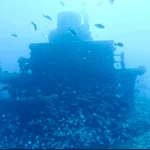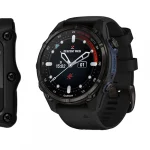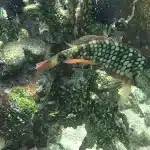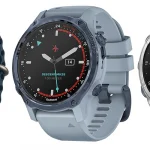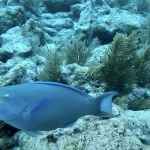The Best Dive Sites for Eagle Rays and Sharks in Key Largo
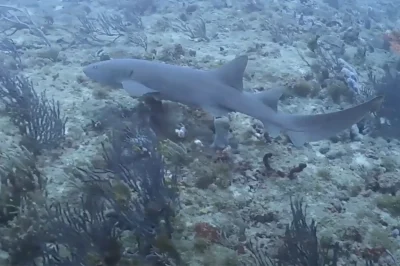
Table of Contents
- The Best Dive Sites for Eagle Rays and Sharks in Key Largo
- Understanding Seasonal Patterns of Pelagic Species
- Diver Mistakes and How to Avoid Them in Key Largo
- Trends in Key Largo Diving Experiences
- Pelagic Species Statistics in Key Largo Waters
- How to Optimize Your Dive with Local Conditions in Mind
- The Importance of Conservation in Key Largo’s Diving Community
- Choosing the Right Gear for Key Largo’s Reefs
Introduction
Explore the enchanting waters of Key Largo and dive into a world brimming with marine wonders. From the graceful glide of eagle rays to the thrilling presence of sharks and vibrant schools of game fish, Key Largo’s deep reefs offer scuba divers a unique opportunity to witness the ocean’s pelagic inhabitants up close. Prepare for your underwater adventure with our data-driven insights and tips, ensuring a dive experience that’s not only thrilling but also profoundly educational.
The Best Dive Sites for Eagle Rays and Sharks in Key Largo
Understanding Seasonal Patterns of Pelagic Species
Key Largo’s rich marine ecosystem supports various pelagic species, notably sailfish, mahi-mahi, and blackfin tuna. Understanding their seasonal behaviour is essential for scuba divers looking to encounter these remarkable creatures during their dives.
Sailfish
The sailfish is found in Key Largo’s waters year-round; however, the peak seasons for sightings typically occur in both summer (June-August) and winter (December-February). During the summer months, warmer waters entice sailfish closer to the surface, where they actively feed and are more likely to be spotted by scuba divers. Conversely, winter is also favoured for sailfish due to favourable offshore fishing conditions, leading to abundant sightings of this agile predator.
Mahi-Mahi
Mahi-mahi, known for their vibrant colours and acrobatic displays, are prevalent in Key Largo primarily during the summer months (June-August). The warmer waters not only enhance their feeding activity but also attract divers keen to experience the thrill of swimming alongside these fast-moving fish. Summer is an ideal time to encounter mahi-mahi around reefs and offshore structures, where they are known to congregate.
Blackfin Tuna
Blackfin tuna are a seasonal highlight during the winter months, particularly from December to February. During this period, blackfin tuna are most abundant in the offshore waters of the Gulf Stream, making winter the prime time for both fishing and diving enthusiasts to encounter them. Their presence is often characterised by exciting surface activity as they hunt smaller fish, offering divers the chance to witness this dynamic feeding behaviour.
By aligning diving trips with these peak seasons, scuba divers can maximise their opportunities to observe and interact with these stunning pelagic species in their natural habitats.
Understanding Seasonal Patterns of Pelagic Species
Common Diving Mistakes in Key Largo
Diving in Key Largo offers stunning marine biodiversity, but divers often make mistakes that can lead to unsafe situations. Here are some common errors and essential tips to avoid them:
1. Premature Flying Post-Dive
Mistake: Flying too soon after diving can risk decompression sickness (DCS).
- Prevention: Wait the recommended times:
- 12 hours after a single no-decompression dive.
- 18-24 hours following multiple dives.
- 24-48 hours for decompression dives.
- Recovery: Stay hydrated and avoid exertion before your flight.
2. Poor Buoyancy Control
Mistake: Inadequate control of buoyancy can cause safety issues and affect enjoyment.
- Prevention:
- Practice maintaining a horizontal position with feet slightly elevated.
- Adjust your weights to achieve neutral buoyancy at your diving depth.
3. Ineffective Ear Equalisation
Mistake: Failing to equalise properly can lead to discomfort and injury.
- Prevention:
- Use feet-first descents; keep your neck and shoulders relaxed.
- Equalise before submerging, using techniques like the Valsalva manoeuvre.
- Recovery: If you experience problems, switch to passive techniques like the Toynbee manoeuvre or take a moment to rest.
4. Skipping Surface Intervals
Mistake: Ignoring recommended surface intervals increases DCS risk.
- Prevention:
- Utilise dive computer data to determine safe time intervals between dives.
- Prioritise longer surface intervals to facilitate nitrogen release from your body.
5. Diving Beyond Certification Limits
Mistake: Exceeding personal certification limits can lead to dangerous situations.
- Prevention: Always remain within the certified depth and time limits.
6. Post-Dive Activity Errors
Mistake: Engaging in risky activities after diving can exacerbate risk factors.
- Prevention:
- Avoid high-risk activities like freediving or strenuous exercise post-dive.
- Skip hot showers and hot tubs to reduce the risk of gas expansion-related issues.
Critical Recovery Tips
- Equalisation Issues: Strengthen Eustachian tube control with dryland techniques like yoga.
- DCS Suspicions: Seek immediate medical attention if DCS symptoms occur, and refrain from flying until cleared.
By adhering to these guidelines, divers can significantly mitigate risks and enhance their diving experience in the beautiful waters of Key Largo.
Diver Mistakes and How to Avoid Them in Key Largo
Pelagic and Game Fish
Common game fish in the Florida Keys include Spanish and king mackerel, cobia, jacks, snook, and tarpon—often targeted in coastal waters. While pelagic species (open-water fish like sardines) are less emphasised in Key Largo, the area’s reefs and coastal ecosystems support species like bluefish, barracudas, and yellowtail snapper, which frequent nearshore structures.
Eagle Rays
Key Largo’s shallow reefs, typically between depths of 10 to 40 feet, are frequent habitats for eagle rays, which often glide gracefully across sand flats and reef edges. Notable locations include North Dry Rocks and Molasses Reef, known for vibrant marine biodiversity. Eagle rays are often spotted during dives, making them a highlight for underwater enthusiasts.
Sharks and Reefs
The most common sharks in the Florida Keys are nurse sharks and reef sharks, typically seen resting on sandy bottoms or patrolling reef edges. These species are generally docile and nocturnal, posing minimal risk to divers. Encounters with these sharks can provide thrilling experiences while highlighting the importance of respecting marine wildlife during dives.
Scuba Diving Tips
- Buoyancy Control: Maintain neutral buoyancy with a horizontal posture to avoid damaging corals. Using streamlined gear can significantly reduce drag.
- Mooring Systems: Always use designated mooring buoys instead of anchors to protect delicate reef systems. Most popular dive sites in Key Largo are clearly marked for easy access.
- Optimal Timing: The best visibility for diving occurs during spring (March to May) and early summer (June to August), with visibility reaching up to 35 feet.
- Conservation Efforts: Join organised coral restoration projects to support reef health while gaining hands-on experience in marine conservation.
For depths of 8 to 15 feet, prioritise shallow dive sites like North Dry Rocks, which are ideal for maximising encounters with larger species such as green moray eels and barracudas.
Trends in Key Largo Diving Experiences
Pelagic Species Statistics in Key Largo Waters
Key Largo, renowned as the “Dive Capital of the World,” offers diverse pelagic species encounters during scuba diving. While specific population statistics are not provided in available sources, qualitative descriptions highlight common sightings and ecological abundance:
Key Pelagic Species
- Barracuda: Frequently observed in large schools, particularly around deeper wrecks like the Spiegel Grove and Molasses Reef.
- Crevalle Jacks: Abundant in schools at advanced dive sites, including the Spiegel Grove.
- Manta Rays: Spotted along reefs and open waters, adding to the area’s diversity.
- Nurse Sharks: Commonly seen resting on reefs or swimming in open waters, especially at night.
- Pelagic Sharks: Reef sharks and occasional nurse sharks are noted in intermediate to deep dive areas.
Diving Conditions Favouring Pelagics
- Artificial Reefs: Sites like the Spiegel Grove (60–130 ft depth) attract barracuda, groupers, and sharks due to the structure’s complexity and food availability.
- Clear Waters: Visibility of 25–100 ft enhances encounters with pelagic species that patrol open areas.
- Molasses Reef: A hotspot for schools of grunts, snappers, and occasional Indo-Pacific batfish (introduced species).
General Abundance
While quantitative data is limited, accounts emphasise “thousands of tropical fish” and “hundreds of species” at sites like the Spiegel Grove, with frequent pelagic visitors. The Florida Reef, as the only barrier coral reef in North America, supports a dynamic ecosystem that draws both reef-dwelling and pelagic species.
Dive Computers
- Diving Computers for Female Divers
- Wreck Diving Computers
- Beginner Diving Computers
- Low-Light Diving Computers
- Technical Diving Computers
- Freediving Computers
- Underwater Photography Diving Computers
- Cold-Water Diving Computers
- Travel-Friendly Diving Computers
- Multi-sport Diving Computers
- Budget-Friendly Diving Computers
- Advanced Recreational Diving Computers
- Smartwatch-Compatible Diving Computers
- Child-Friendly Diving Computers
- Military or Professional Diving Computers
Pelagic Species Statistics in Key Largo Waters
Key Largo’s underwater landscape is a vibrant ecosystem where pelagic species thrive, offering an exceptional diving experience for enthusiasts. The rich marine biodiversity is nourished by warm Gulf Stream currents, creating optimal conditions for various game fish and facilitating exciting encounters.
Pelagic Species
Among the notable pelagic species found in Key Largo are:
- Sailfish: Renowned for their speed and grace, sailfish are often spotted during warmer months and around coral reefs.
- Mahi-mahi (Dorado): These colourful fish are typically abundant in the summer and are a popular catch for both divers and anglers.
- Tuna: Species such as blackfin and skipjack tuna frequent the area, especially around the Key Largo Humps, where nutrient-rich waters converge.
- Marlin: An iconic pelagic species, marlins can often be found in deeper waters, drawing anglers and divers alike.
- Swordfish: Known for their impressive size and strength, swordfish are primarily targeted in deeper waters beyond the continental shelf.
Deep Reefs and Key Largo Hotspots
Key Largo features several critical hotspots for accessing these pelagic species.
- John Pennekamp Coral Reef State Park: This marine sanctuary is the first underwater park in the U.S. and is a prime location for divers to encounter diverse reef fish like snapper and grouper.
- Artificial reefs and shipwrecks: These man-made environments provide habitats for species such as amberjack and tarpon, enhancing both the diving experience and fishing opportunities.
- Key Largo Humps: Submerged ridges known as humps draw concentrations of blackfin tuna and other pelagics, making them a popular site for diving and fishing trips.
Shark Sightings and Deep-Sea Species
Diving beyond the continental shelf can also yield thrilling encounters with large sharks and trophy-sized swordfish. While sharks are frequently documented, specific information on eagle rays in Key Largo remains limited based on current data.
Scuba Diving Opportunities
- Diving at John Pennekamp Coral Reef State Park: This site provides excellent access to vibrant coral ecosystems teeming with life.
- Exploring offshore reefs and wrecks: These environments offer exciting opportunities to observe pelagic and game fish up close.
With careful planning and an understanding of local conditions, divers can maximise their chances of witnessing the spectacular marine life that Key Largo has to offer.
How to Optimise Your Dive with Local Conditions in Mind
Top Dive Sites for Eagle Rays, Sharks, and Game Fish
Key Largo offers exceptional diving opportunities to encounter eagle rays, sharks, and game fish at specific hotspots, with optimal conditions varying by season:
- Eagle Ray Alley (Molasses Reef)
- Key Features:
- Known for frequent eagle ray sightings, including large groups (“fevers” of 6+ rays)
- Coral formations, sand channels, and clear visibility (60+ feet)
- Depths: 20–60 feet, suitable for divers of all skill levels
- Wildlife: Eagle rays, sea turtles, tropical fish, and occasional hammerhead or reef sharks.
- Key Features:
- French Reef
- Key Features:
- Prone to pelagic sightings, including manta rays, hammerheads, blacktip reef sharks, and eagle rays
- Structured reef with varied topography attracting larger predators.
- Key Features:
- John Pennekamp Coral Reef
- Key Features:
- Home to the iconic Christ of the Abyss statue, a hub for tropical fish, rays, and sharks
- Frequent shark encounters (resting or patrolling reefs).
- Key Features:
Best Time to Dive
- Summer Months: Peak eagle ray activity, with “fevers” commonly spotted.
- Year-Round Diving:
- Sharks: Often encountered, particularly under reef overhangs or patrolling zones.
- Water Conditions: Calm seas and warm temperatures (~82°F) allow diving year-round.
Pro Tips
- Boat Trips: Dive operators like Rainbow Reef and Island Venture offer guided trips, optimising weather and wildlife activity.
- Depth Considerations: Shallow sites (e.g., Eagle Ray Alley) suit recreational divers, while deeper areas (French Reef) cater to advanced exploration.
The Importance of Conservation in Key Largo’s Diving Community
Choosing the Right Gear for Key Largo’s Reefs
When preparing for a scuba diving adventure in Key Largo, selecting the appropriate gear is essential for a safe and enjoyable experience. With the region’s diverse marine life and various dive sites, understanding the specific requirements for deep reef explorations can enhance your overall diving experience.
Wetsuit Recommendations
The waters of Key Largo generally range from 70°F to 85°F. Diver comfort is critical, so choosing the right wetsuit thickness is crucial. A 3mm wetsuit is typically suitable for warmer months, while a 5mm wetsuit may be necessary during cooler months, especially if planning extended stays in the water. Additionally, even in warmer waters, wearing a lightweight neoprene hood can help prevent chilling during long dives or at greater depths, where temperatures may drop significantly due to thermoclines.
Dive Gear Packages
Local dive shops, such as Rainbow Reef Dive Center, offer comprehensive gear packages designed for various experience levels:
- Open Water Package: Includes essential gear like a mask, fins, snorkel, dive bag, slate, whistle, defog, and slap strap. Popular brands like Aqualung and Mares are featured in these packages. There are also options to upgrade masks for a nominal fee.
- Advanced and Master Scuba Diver Packages: These cater to higher skill levels with specialised gear tailored to advanced diving techniques.
Purchasing these packages also often leads to discounts on certification classes, making gear acquisition both economical and beneficial for skill improvement.
Essential Accessories
In addition to the main scuba gear, several accessories can enhance safety and functionality:
- Signalling Device: A whistle or inflatable signal tube for emergency situations.
- Backup Light: Ensures visibility in low-light conditions; choosing a compact model can facilitate easy storage.
- Certification Card: It’s critical to carry this for verification of scuba certification during your dive.
- Spare Weight Belt: Provides redundancy for buoyancy control, particularly useful for deeper dives.
- Booties: Although optional, they provide foot protection and better traction on rocky surfaces.
Key Considerations
When diving in Key Largo’s coral reefs:
- Prioritise lightweight gear: This enhances mobility, allowing for easier navigation around delicate coral environments.
- Rentals available: Key Largo Dive Center provides affordable rentals for BCDs, regulators, and wetsuits, ideal for travellers.
- Maintain gear: Keeping masks clear with defog spray is essential for safety and visibility underwater.
Choosing the Right Gear for Key Largo’s Reefs
Key Largo’s deep reefs, particularly in areas like French Deep and various artificial structures, are home to an array of pelagic game fish, majestic rays, and formidable sharks. These habitats create unique ecosystems where species from both open ocean and reef environments coexist, providing exhilarating experiences for scuba divers.
Pelagic Game Fish
The deeper sections of the reef attract numerous migratory and resident pelagic species, including:
- Sailfish: Famous for their speed, sailfish are typically found in deeper offshore waters but can also be spotted closer to reefs during migration periods.
- Tuna (blackfin and skipjack): These fish are abundant near the reefs and open waters, often pursued using trolling techniques.
- Mahi-Mahi: Known for their vibrant colour and acrobatic jumps, mahi-mahi are frequently encountered while diving or fishing near deeper reefs.
- Mackerel: King and Spanish mackerel thrive in these waters and are duly recognised for their fast and aggressive strikes, providing exciting fishing opportunities.
Eagle Rays and Manta Rays
French Deep, with depths ranging from 55 to over 80 feet, is especially noted for:
- Eagle Rays: Often seen gliding gracefully near the edges of the reef or drifting through the currents, these rays are a common sight.
- Manta Rays: Although less common, manta rays can occasionally be observed in the deep, showcasing the region’s rich marine biodiversity.
Sharks
Deep reef sites are also hotspots for various shark species:
- Reef Sharks: Usually found in clear waters adjacent to submerged structures, these sharks are commonly encountered by divers.
- Hammerhead Sharks: Known for their distinctive head shape, hammerheads are often seen during drift dives at French Deep.
- Large Sharks: Offshore habitats beyond the reefs attract impressive species such as bull sharks and tiger sharks, offering adventurous dive experiences.
Fishing Methods
For those looking to fish in these rich waters, successful techniques include:
- Trolling: This method is particularly effective for catching tuna, sailfish, and mackerel, utilising both lures and live bait.
- Bottom Fishing: This approach targets species such as grouper and snapper in deeper reef areas, often in conjunction with pelagic species.
Sources
- Captain Experiences – Everything to Know About Key Largo Fishing
- Fishing Booker – Florida Fishing Seasons
- Chef Charles – Key Largo Fish Species
- Florida Scuba Diving – Flying After Diving: Safe Planning for Your Return Journey
- Divers Alert Network – 7 Mistakes Divers Make and How to Avoid Them
- Florida Scuba Diving – Never Struggle with Ear Equalization Again
- NOAA – Responsible Diving
- Scuba Club Tucson – 10 Mistakes to Avoid Right After a Dive

